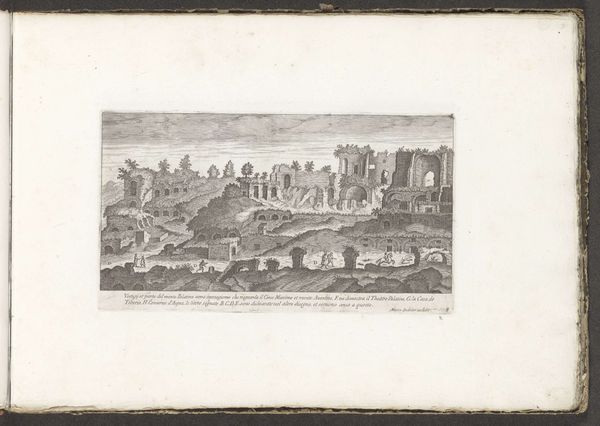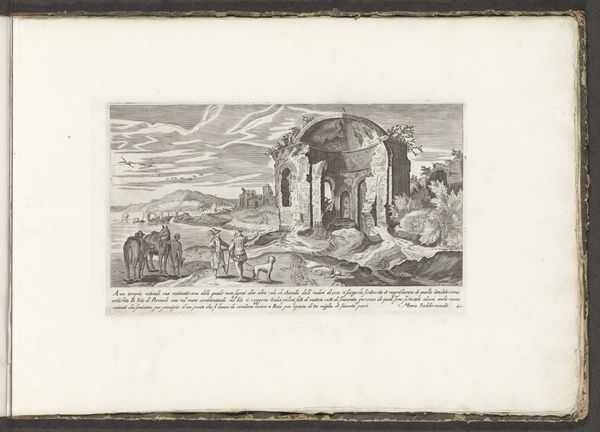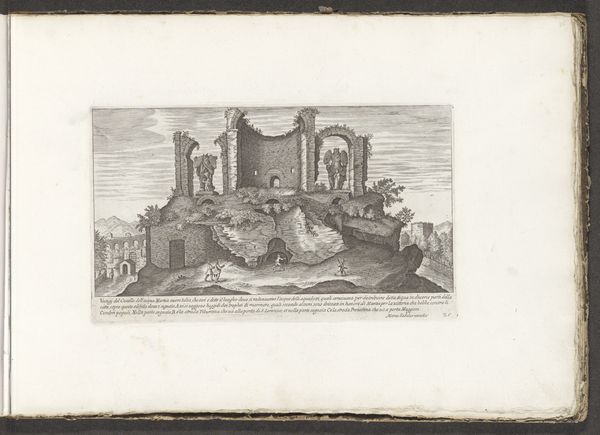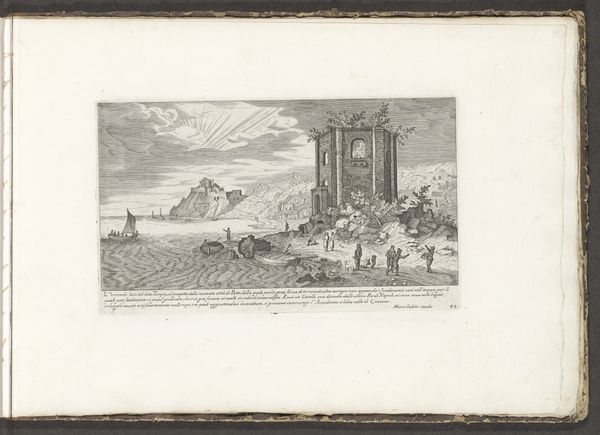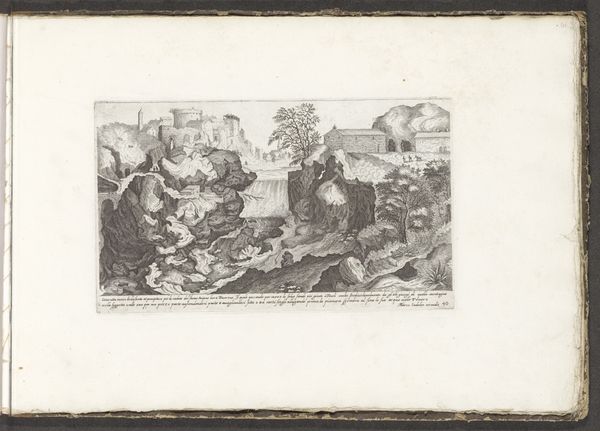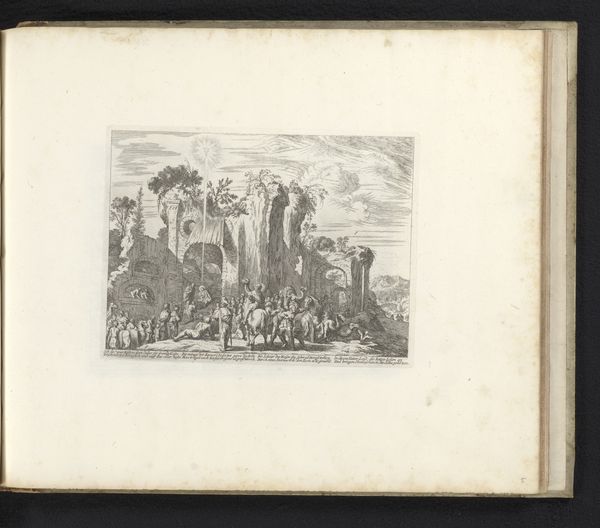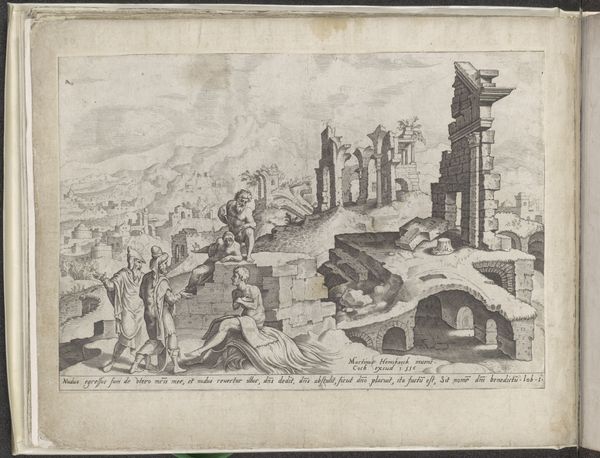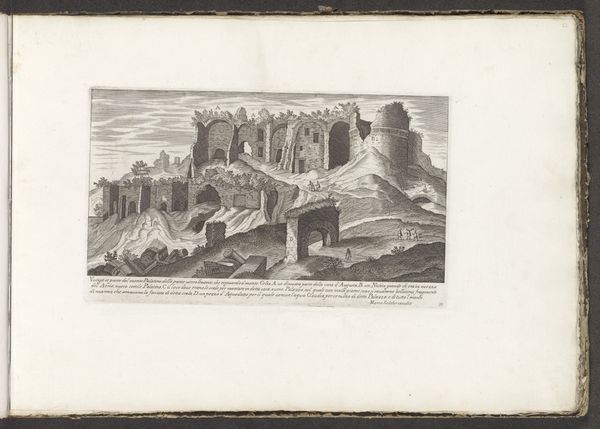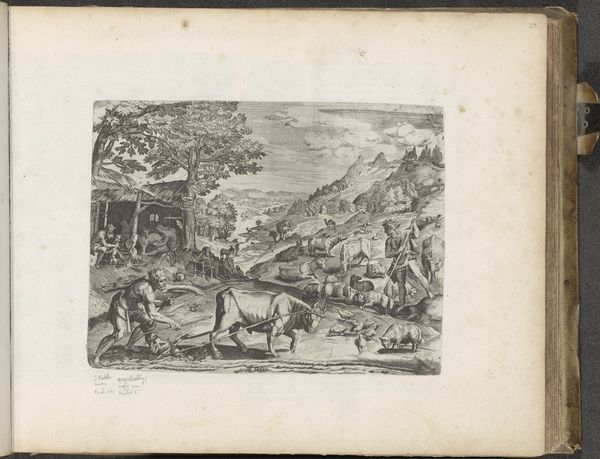
print, ink, engraving
#
baroque
#
ink paper printed
# print
#
landscape
#
classical-realism
#
perspective
#
ink
#
pen-ink sketch
#
cityscape
#
engraving
Dimensions: height 154 mm, width 265 mm
Copyright: Rijks Museum: Open Domain
Editor: This is an engraving titled "Ruins on the Slopes of the Palatine Hill, the Colosseum on the right," dating back to 1680, created anonymously using ink on paper. I'm immediately struck by the contrast between the detailed ruins in the foreground and the distant Colosseum. What does this juxtaposition tell us, and how do you interpret this work? Curator: This image is more than just a depiction of Roman ruins; it's a commentary on power, decay, and the cyclical nature of history. The Palatine Hill was, of course, the seat of Roman emperors, so to see it in such a state of ruin next to the Colosseum, a symbol of imperial spectacle, invites us to question the structures and the very ideas of empire itself. Consider the artist's choice to present the Palatine ruins in the foreground and to give the Colosseum a less distinct appearance. Who are the figures at the base of the image, and what purpose do they serve? Editor: They seem to be observing the ruins...almost like tourists? Maybe it speaks to how the remnants of a dominant culture become objects of curiosity or study for future generations. Curator: Precisely. It speaks to issues of cultural memory, of whose history gets remembered and how. Notice the birds circling around the ruins: they introduce ideas of freedom and natural cycles encroaching on the site. We must consider how this imagery reinforces or challenges the dominant narratives of the time. This was produced during the Baroque period, when rulers and Popes were consciously aligning themselves with the prestige of ancient Rome while building their empires. So is this glorifying the eternal aspects of empire, or is there criticism of the vanities and ambitions of powerful men built into the print? Editor: I never would have thought of it that way. I suppose art always serves more than one function. It can promote an agenda even while pointing out a weakness in it. Thank you for broadening my understanding of cultural messaging and its intersection with the goals of those who rule. Curator: Indeed, it's the friction between intention and reception that makes art such a powerful mirror for ourselves.
Comments
No comments
Be the first to comment and join the conversation on the ultimate creative platform.

